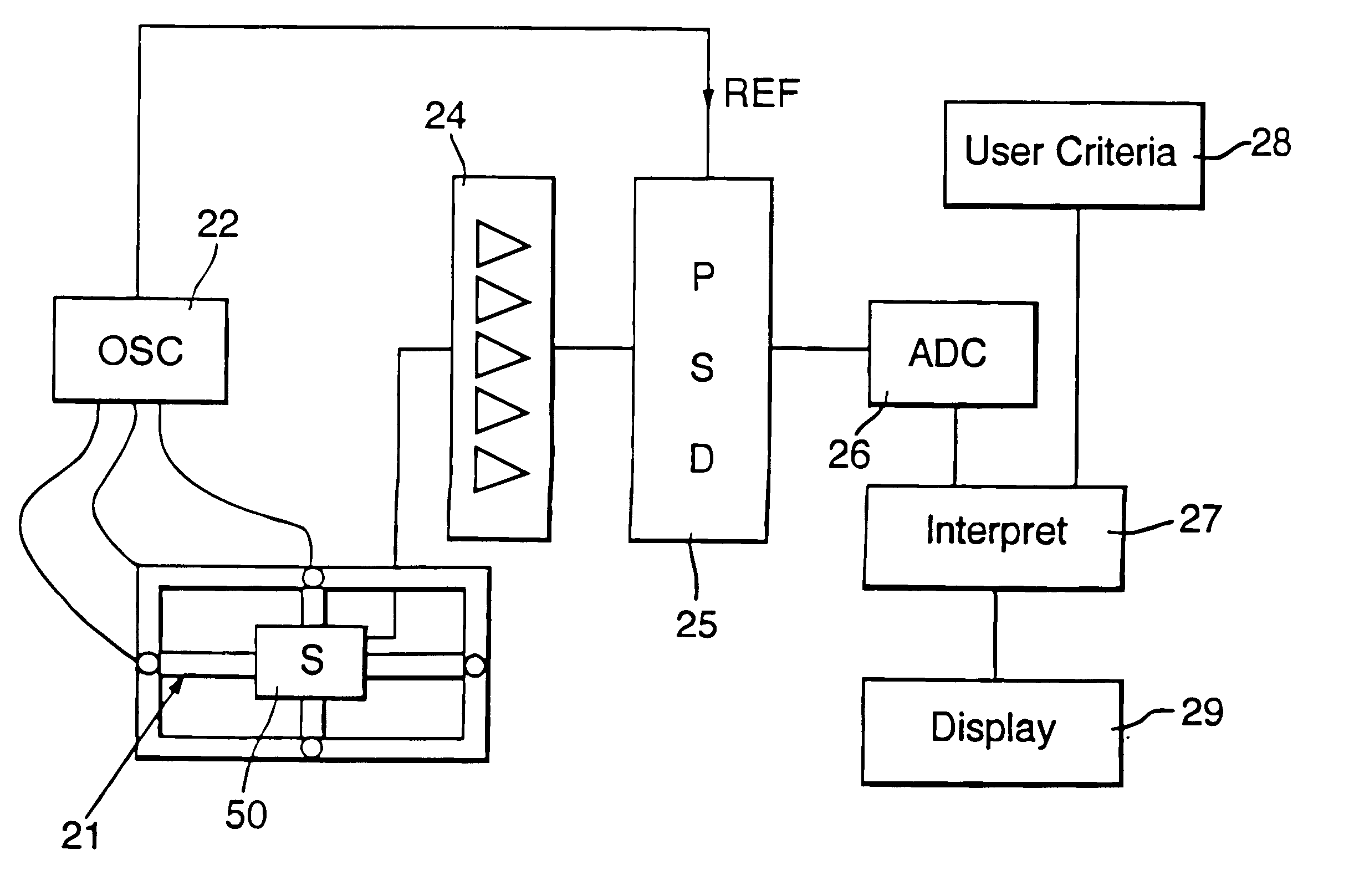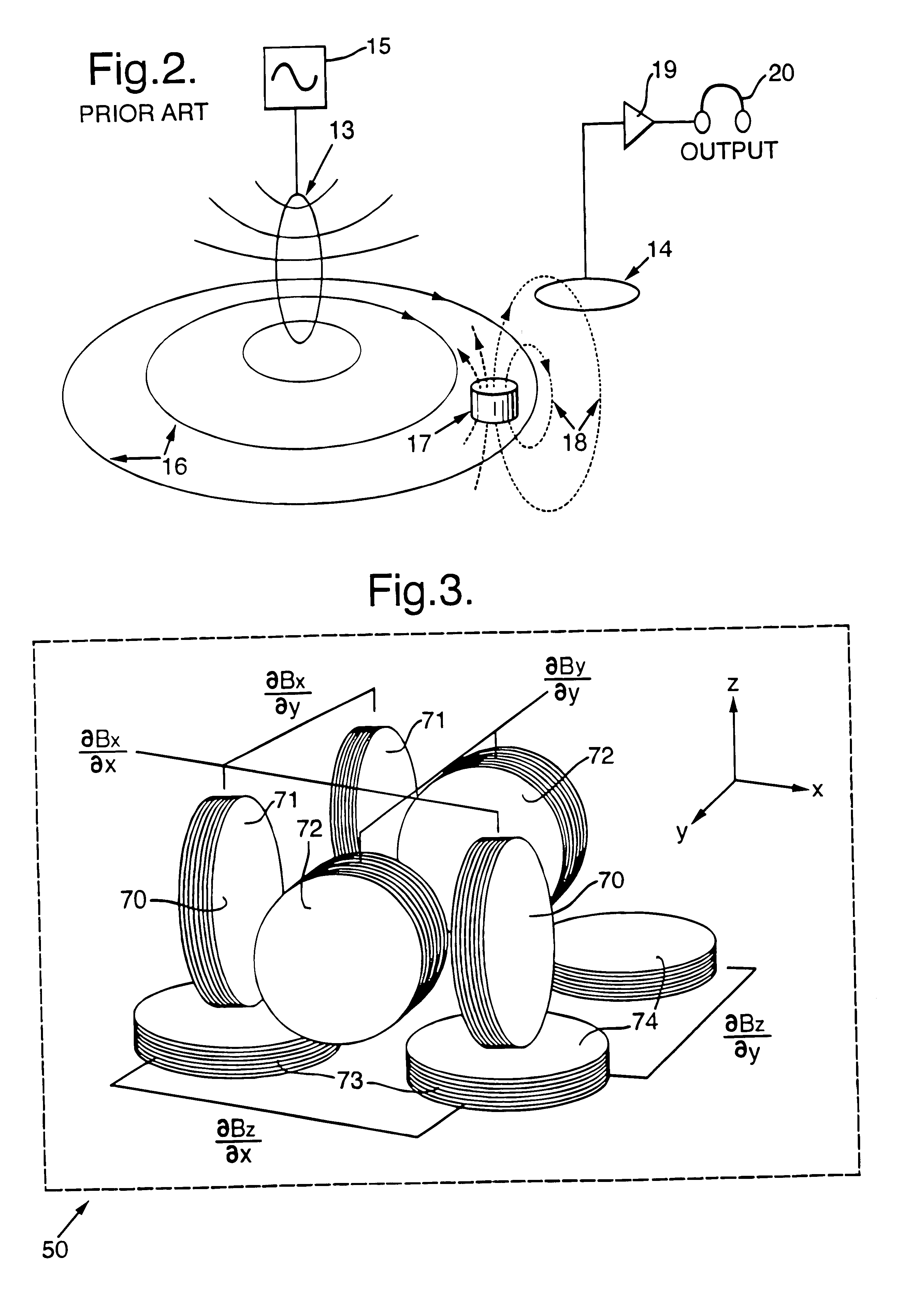Precision metal locating apparatus
a metal detector and precision technology, applied in the field of metal detector apparatus, can solve the problems of limiting the number of applications of metal detectors, affecting the accuracy of metal detection, and direct detection of signals,
- Summary
- Abstract
- Description
- Claims
- Application Information
AI Technical Summary
Problems solved by technology
Method used
Image
Examples
Embodiment Construction
By way of background, the basic principles of conventional p-i and c / w detectors will be described with reference to FIGS. 1 and 2 respectively. For the purpose of this specification, the phrase "detection of a metal" is taken to mean that a metal is observed to be within a relatively large volume of space whereas the term "location of a metal" is used to mean a more precise indication of the metals position within the larger volume.
Referring to FIG. 1, a conventional p-i detector uses a pulse generator 1 to apply a current pulse to a transmitter coil 2. This generates a pulsed magnetic field 3 which may fall incident upon a metal 4. If so, the metal 4 will be induced with an eddy current which will decay to zero some time after the energising pulse has switched. This decaying eddy current will generate a secondary magnetic field 5 (shown as a dashed line) which may thread the receiver coil 6 and be amplified by an amplifier 7. This signal is passed through a gate 8 which is opened ...
PUM
 Login to View More
Login to View More Abstract
Description
Claims
Application Information
 Login to View More
Login to View More - R&D
- Intellectual Property
- Life Sciences
- Materials
- Tech Scout
- Unparalleled Data Quality
- Higher Quality Content
- 60% Fewer Hallucinations
Browse by: Latest US Patents, China's latest patents, Technical Efficacy Thesaurus, Application Domain, Technology Topic, Popular Technical Reports.
© 2025 PatSnap. All rights reserved.Legal|Privacy policy|Modern Slavery Act Transparency Statement|Sitemap|About US| Contact US: help@patsnap.com



